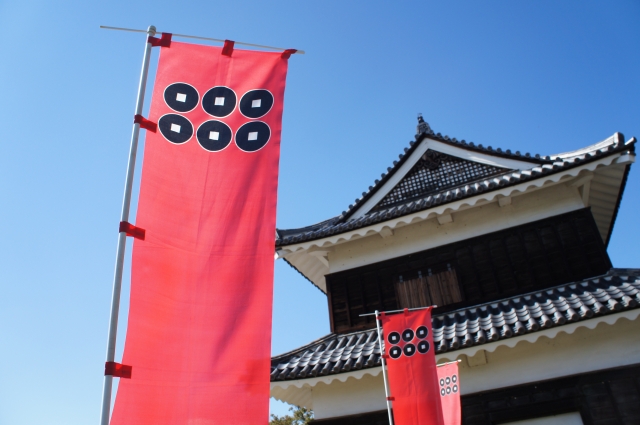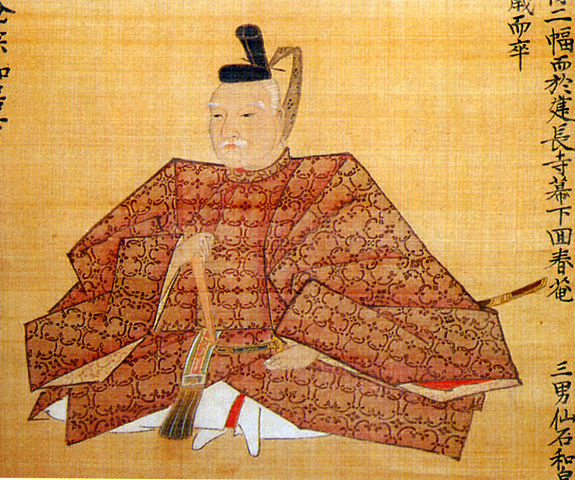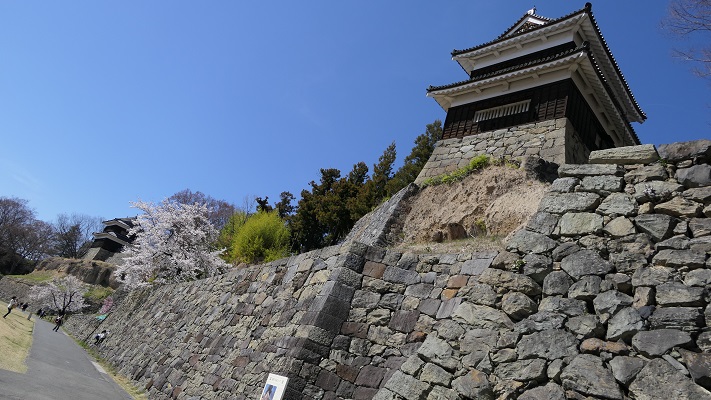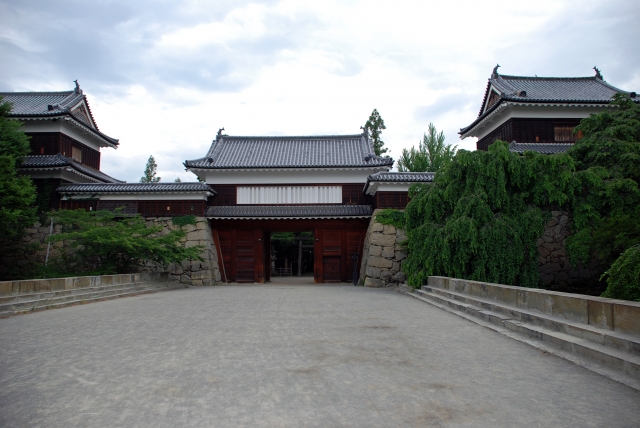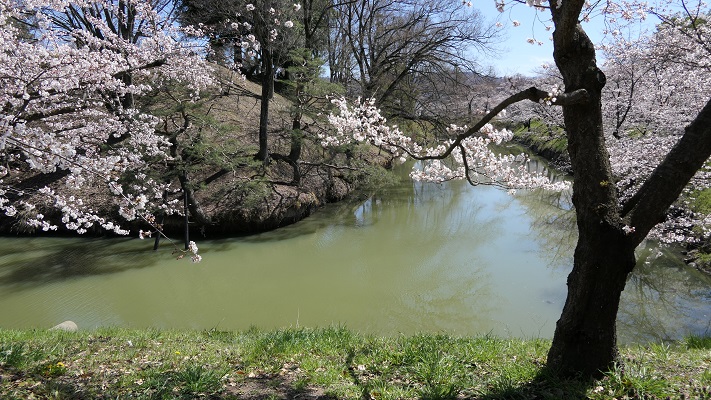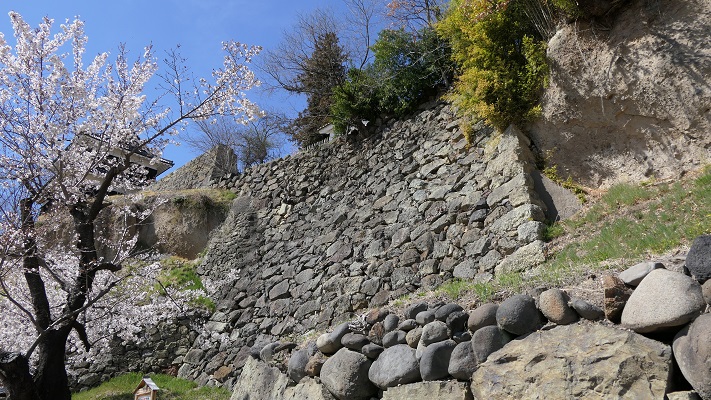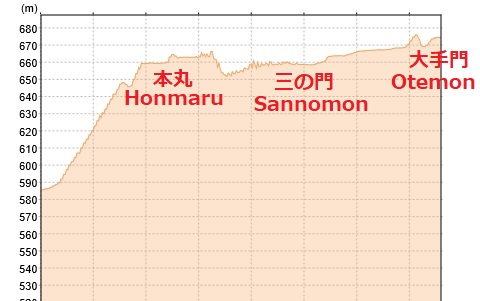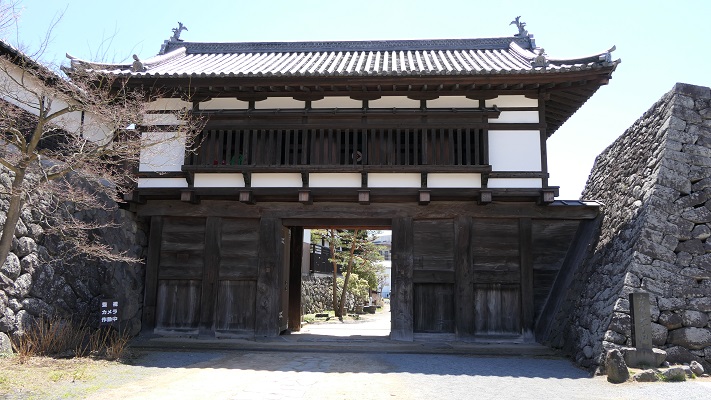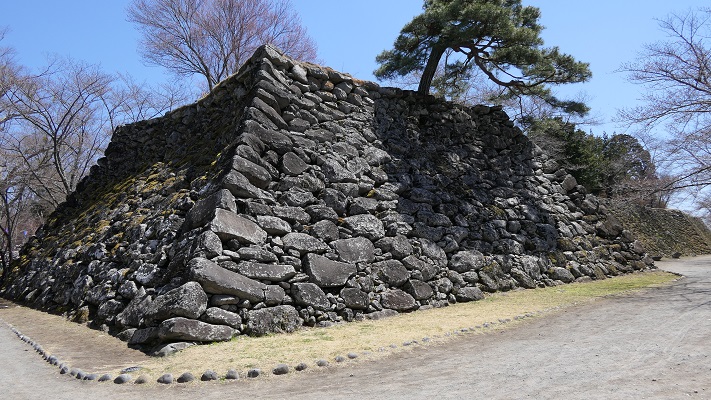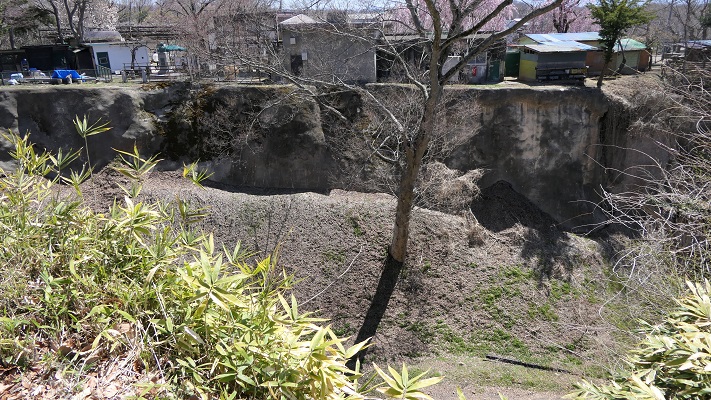Location and History

松本城、特にその天守は現在の長野県松本市において際立った存在です。しかし、現在までの道のりは平坦ではありませんでした。16世紀に小笠原氏が最初にこの地に城を築き、しばらくして松本城と名付けました。1590年、石川氏がここに移され、城の拡張に手をつけ、そして天守を建てました。何度か改築の後、松平氏によって1633年に現在と同じ姿に至りました。
The Matsumoto castle, particularly its keep “Tenshu” is outstanding now in Matsumoto city, Nagano prefecture. But the road to present has not been smooth. In the 16th century, the Ogasawara clan first built the castle in this area. After a while, they named it Matsumoto castle. In 1590, the Ishikawa clan were transferred to the area and started to spread the castle and they also built the Tenshu. It was modified several times and reached the same appearance as now in 1633 by the Matsudaira clan.
松本城航空写真(The aerial photo of Matsumoto Castle)

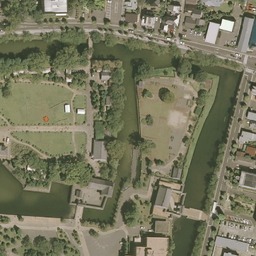
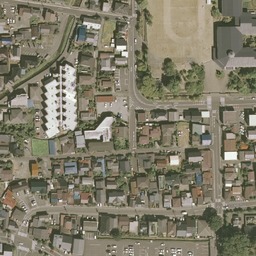

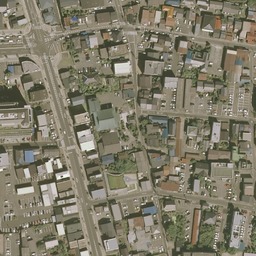

















Features
城の歴史は長いですが、城のシンボルはとにかく天守に尽きます。天守は「大天守」「乾小天守」2つの櫓「辰巳附櫓」「月見櫓」から成っていて、互いにつながっている構造です。大天守は、東日本で唯一の現存5層天守であり、黒く輝いている姿を見ることができるのは、下見板(板壁)に毎年特別な漆が塗られているからなのです。
In spite of its long history, the symbol of the castle is just the Tenshu. It consists of the large keep “Dai-Tenshu”, the Inui small keep “Sho-Tenshu”, and two turrets (Tatsumi-Tsuke Yagura and Tsukimi Yagura) which are connected to each other. Daitenshu is the only one remaining and its five-story castle keep in the east Japan. It has a brilliant black colored look coming from wooden side walls painted with special Japanese lacquer, annually.


松本城は、同じく5層の大天守を持つ姫路城とよく比較されるのですが、姫路城の方は西日本にあって白亜に塗られており、とても対照的です。松本城の天守はまた、国宝に指定されている現存5天守の1つとなっています(他は、姫路、彦根、犬山、松江)。
It is often compared with the Himegi castle’s equally five-story Dai-Tenshu painted in white clearly in the west Japan by contrast. Matsumoto castle’s Tenshu is also designated as one of the 5 remaining keeps of Japan’s national treasures (the others are Himeji, Hikone, Inuyama and Matsue).

そもそも城の装備、例えば石落としや狭間などは正に戦いのために作られているのですが、それに加えてよくデザインされ、各層の屋根ともよくマッチしています。
Basically its devices such as machicolations and loopholes were built just for battles, they were also well designed and match each story’s roof.
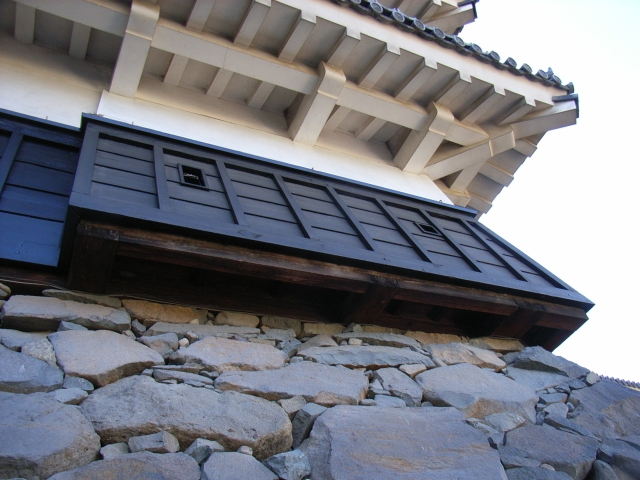
この城の美しく調和が取れた姿は、歴史ファンだけでなく、写真家、芸術家、一般の観光客を魅了しています。一例として、日本アルプスを背景にした松本城は、ともよい写真の主題になると思います。
Its beautiful total balance of the castle has been attracting not only history fans but also photographers, artists and everyday visitors. For example, Matsumoto castle with the background of the Japan Alps could be a very good photo subject.
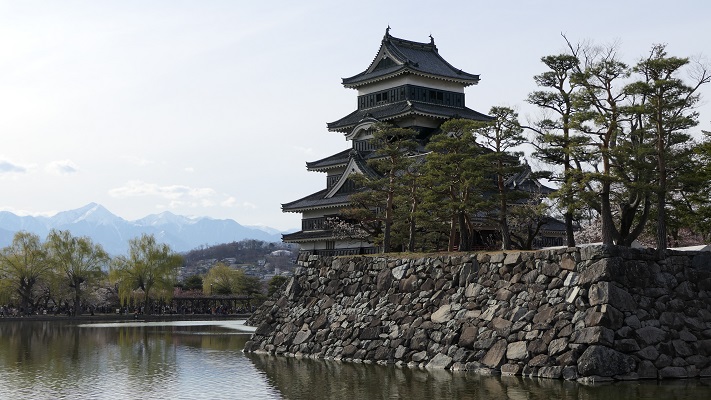
天守の中に入ることもできます。実は内部は6階建てです。ほとんど木材によりながら、こんなにも頑丈に作られていることに驚かれることでしょう。但し、内部はどちらかといえば暗く狭く、階段は急です。ですので動きやすい服装で登閣されることをおすすめします。
You can also get in the inside of the Tenshu which in fact consists of 6 floors. You may be surprised to see how strong it is built by using mainly wooden materials. But the inside is relatively dark and narrow, and stairways are steep. So it is recommended to wear comfortable clothes.

Later Life
その後の松本城はとてもシビアでした。まず江戸時代、本丸御殿が焼け落ちたとき、松本藩の藩士たちは必死に働き、天守に火が及ぶのを防ぎました。明治維新の後、他の建物が皆撤去されていき、ついには天守も売られてしまい、廃材として解体されるところでした。ここで社会運動家の市川量造が登場し、買主に待ってもらうよう頼み、その間に資金を集め、ついには買い戻しに成功しました。
The later life of Matsumoto castle was very severe. In the Edo period, when the Honmaru main hall was burned down, warriors of the feudal domain of Matsumoto worked their hardest to prevent Tenshu from burning. After the Meiji restoration, all of the other buildings were removed, and finally Tenshu was sold to possibly be for waste material. Ryozo Ichikawa, a social campaigner came out, then asked the buyer to suspend, after that he collected money to get it back, and was successful in the end.

しかしながら、それだけでは不十分でした。このような大きく古い建物の維持には、継続的なメンテナンスが必要なのです。明治中期には、天守は柱の腐りから6度傾いてしまい、中にはコウモリが住む有様でした。ここでもう一人の救世主、学校の校長であった小林有也が登場し、城の修復に尽力しました。そしてついには松本城は国宝に指定されたのです。更には最近では、天守の周りに過去にあった門、黒門そして太鼓門が再建されています。
However, that was not enough for the castle. Such a large and old building is needed to do continuous maintenance to keep. In the middle Meiji era, Tenshu got to lean at about six degrees due to central pillars decayed, and bats lived in it. Another savior, school head Unari Kobayashi worked hard to repair the castle. At last the castle was designated as a national treasure. In addition, other traditional gates around Tenshu such as Kuromon and Taikomon has been rebuilt these days.

My Impression
もし天守に入りたいのであれば、十分な時間を確保していただいた方がよいと思います。恐らく天守に入る人たちの列に並ばなければならず、1時間近くは待つことになるでしょう。ここ数年有名どころの城巡りがブームになっているからです。
I would like to say that you would better have enough time to spend if you want to get in Tenshu, as there might be a long line. It may take nearly 1 hour in line because visiting famous castles has become more popular over the last few years.

そして、もう一つお願いとしては、この城を守ることに尽力した2人の功労者に敬意を表していただきたいのです。黒門の内側に、2人の顕彰碑があるので是非ご覧ください。
And my another suggestion is to show respect to two saviors who kept the castle intact, by looking at the plaque of them that is placed inside the gate of Kuromon.
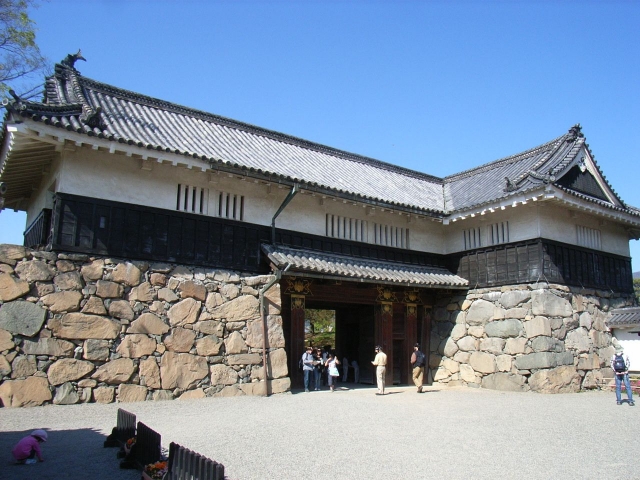
How to get There
松本駅またはバスターミナルから歩いて約15分。車の場合は、城の周辺にいくつか駐車場があります。
東京から:北陸新幹線で長野駅まで行き、篠ノ井線の普通列車に乗り換えてください(電車の場合)。または新宿バスターミナルから直行高速バスに乗ってください(バスの場合)。
It takes about 15 minutes on foot from the Matsumoto train station or bus terminal. When using a car, there are few parking lots around the castle.
From Tokyo: Go to Nagano on Hokuriku shinkansen super express, transfer local train on Shinonoi line (train). Or take a direct highway bus at the Shinjuku bus terminal (bus)

